|
|
|  |
|
Glyph 391: Mahadevan 1977 concordance entries
[1] chakra, wheel, rotation
[2] World, loka
[3] Sun
[4] Light
[5] World axis
[6] Sudarshan Chakra, discus weapon of Vishnu
[7] OM
[8] Deva, god *
* Bonta, Partial decipherment. Sumerian DINGR.
|
| Inscription 1148 | God union: Vishnu & Shiva
Sudarshan Chakra weapon of Vishnu
World as Vishnu and Shiva |
| 391 |
99 |
62 |
342 |
 |
 |
 |
 |
GOD
chakra, wheel, rotation //
loka, world
place, location |
and
of
union
with
together
𓎛 |
VISHNU
fish god symbol with a tusk,
Matsya the fish, first avatar of Vishnu
Varaha the boar, third avatar of Vishnu |
SHIVA |
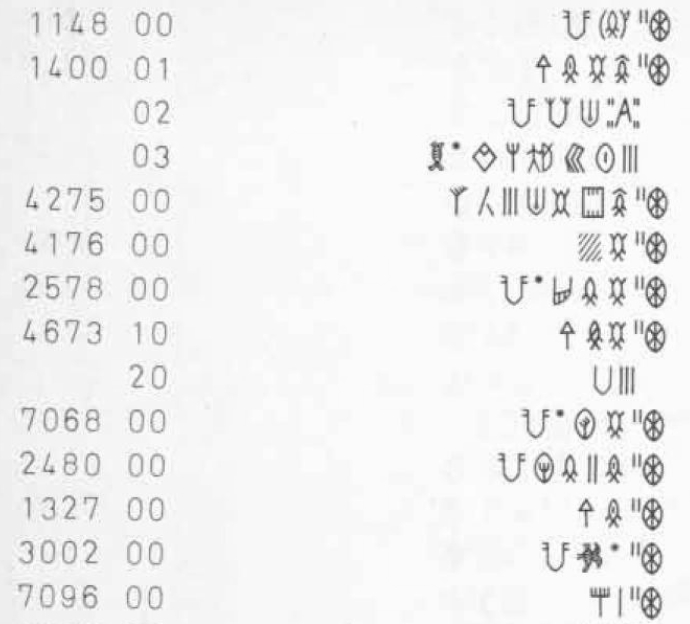
Linga Purana {Chapter 3: Creation}
SadaSiva: Five-faced Shiva
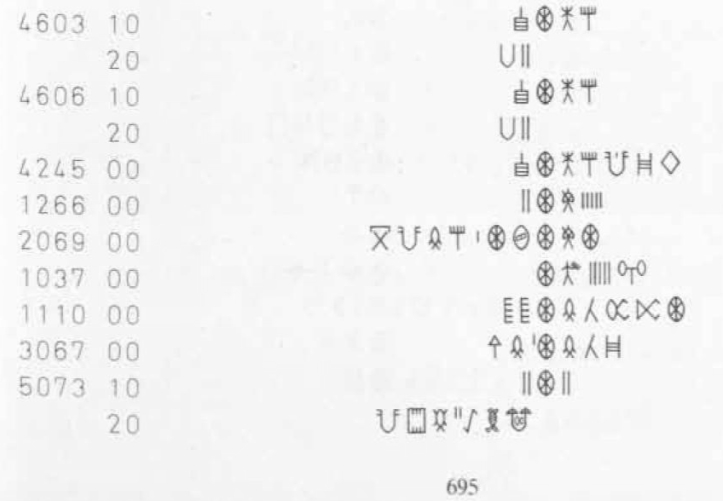
Rotation and Churn of Ocean of Milk

2268: rotation of damaru drum: Shiva.
2689: Rotation of Vasuki, the rope for churning of the Ocean of Milk, Damaru drum, Shiva

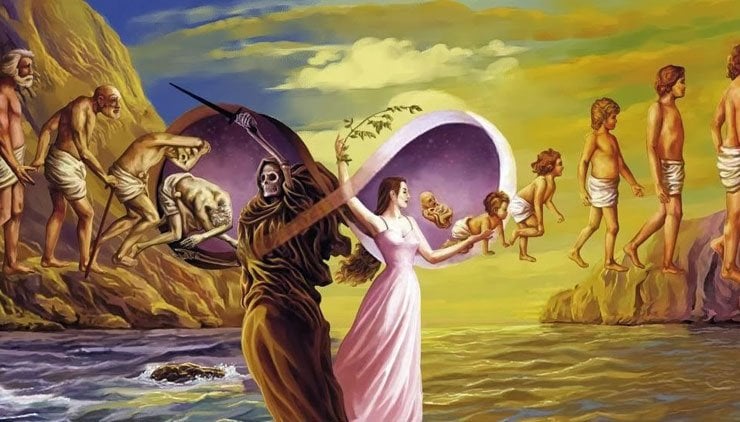

X: crossing over, reincarnation -- an endpoint
The knife, the blade -- an endpoint
The corpse, the grave -- an endpoint
Shiva -- Endless
|
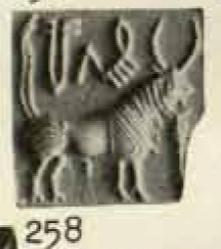
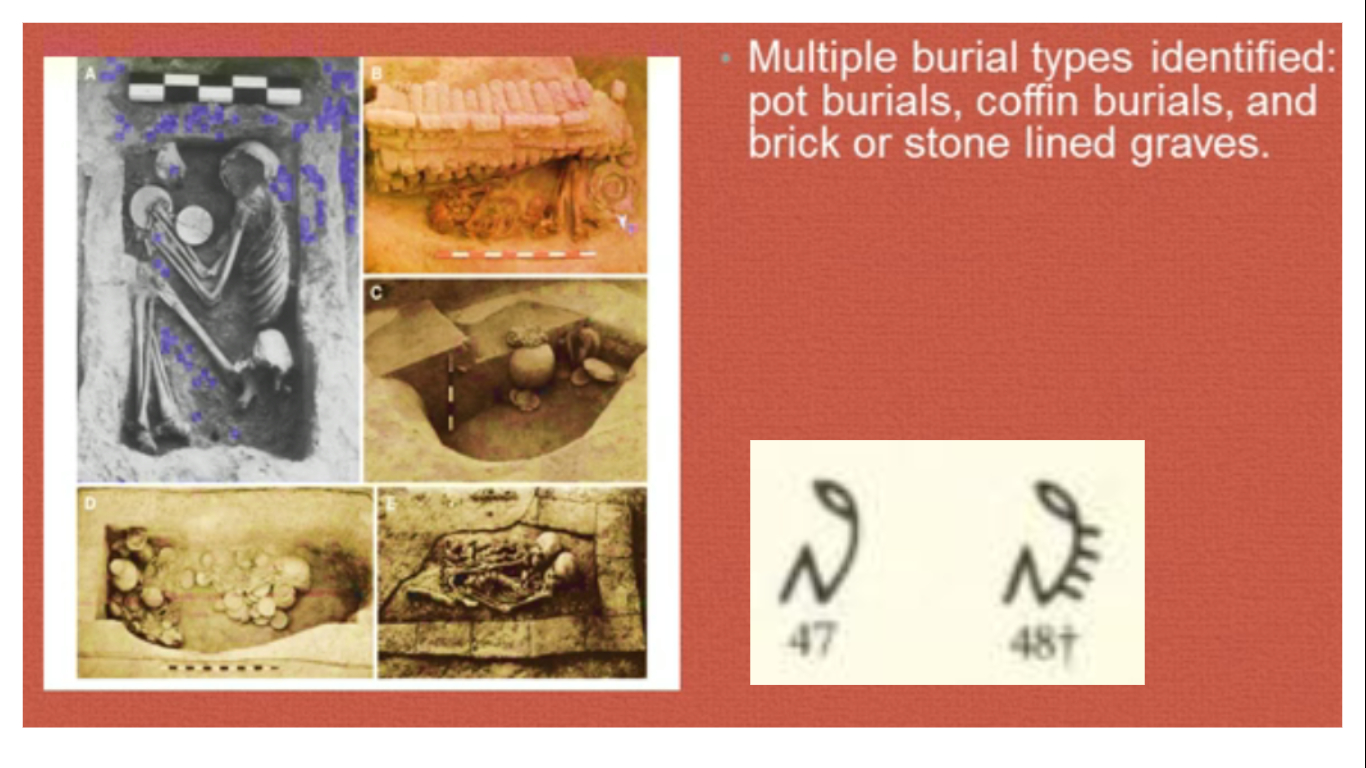
Glyph 48 applied by CCH 2024 to Indus Script discussion by Rig - History Extended 2024
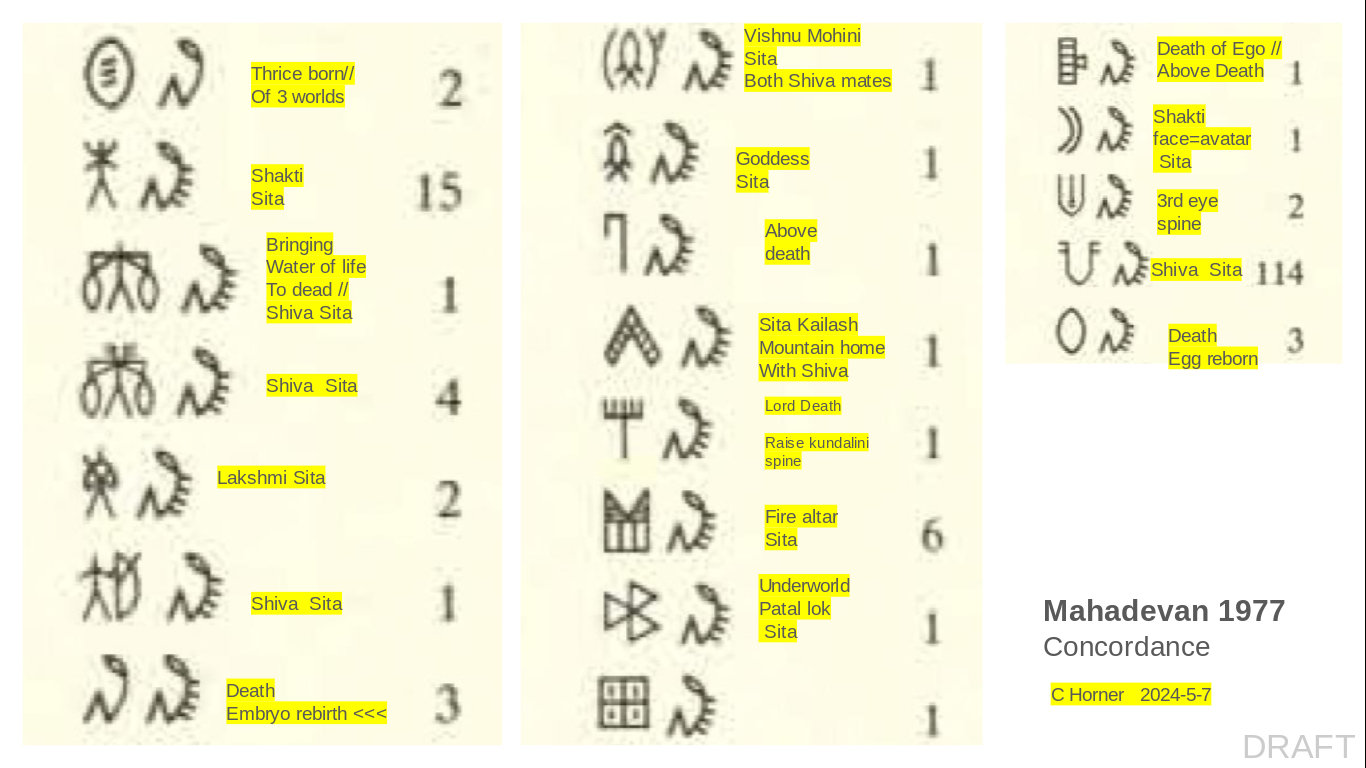
Hindu mythology interpretation of the Indus Script
Celeste Claire Horner 2024
 | Jyotirlinga, the pillar of fire from which Shiva emerged in the legend of How Brahma lost his fifth head |
| U | universal, union.
Third eye tika. Shiva wallowed poison from Ocean of Milk. |
| |||| | Represents the Ganga river falling from heaven. Shiva saved the world by absorbing the impact of the water fall. It flows gently from the top-knot of his hair. |
 |
The lovely divine maidens, celestial musicians and dancers, the Apsaras, who emerged from the Ocean of Milk. Shiva saved the world by swallowing the poison which emerged from the Ocean of Milk so that the Devas could have the Amrita elixir of immortality and other treasures. The goddess Lakshmi, divinity of wealth and fortune, may be represented by this symbol. She has a special connection to Shiva. The Bael tree which sprouts from her hand, and the fruit, which represents her also, are sacred to Shiva. |
 |
The dead. Skeleton man. Corpse in fetal position with spinal vertebrae protruding. Death of Shiva's wife Sita in a sacrificial fire. The dead in a fetal position in anticipation of reincarnation and rebirth. Pashu, the noose that Yam, God of Death, uses to pull a soul from a body.
|
 | E: Endless, deep and high. Represents the Jyotirlinga pillar of fire representing Shiva. The pillar of the cosmos, the gods Vishnu and Brahma failed to find the end of it. |
|||| Represents the depths of the Ocean of Milk
Glyph 171. Represents Ocean of Milk, or lord of the Oceans. 5-prong trident. Also appears as Neptune's 5-prong trident sceptre in Ephesus house. Alamy.
8059: Ψ Trishul. Jyotirlinga I. ||| Tri Murti, TRi. TRIMURTI.
How Brahma Lost His Fifth Head ^
|
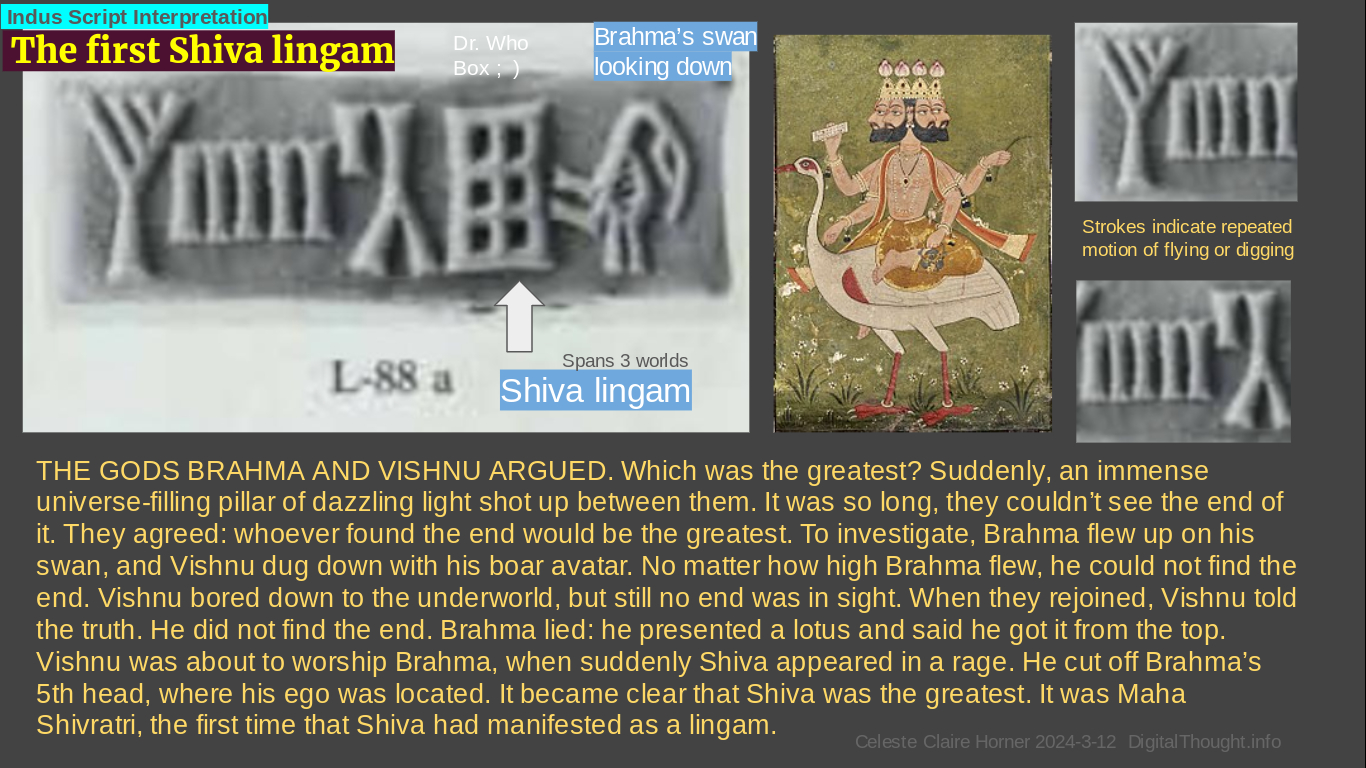
Figure 6: Indus Script with glyphs for a Shiva lingam, the swan of Brahma, and multiple strokes for digging and flying action. CCH 2024-3-12.
The swan's head is bent back like it is looking down from the tall tower, has lost its head, is dead, or ashamed. The head looks like the Egyptian hieroglyph for crescent moon, an emblem of Shiva. The upside down Y look like the Eiffel tower. The lingam was an infinite tower.
RELATED INDUS SCRIPT GLYPHS:
Glyphs #2 (Shiva appears in pillar). Glyph #5 (Brahma head). Glyph 79 (Brahma bird avatar looking down). Glyph #83 (Brahma bird avatar with no head). Glyph #198 (5th head of Brahma, 5th block on top of stack of 4).
|
[INDUS SCRIPT HOME]
DRAFT UPDATED 2024-5-19 @12:25 , CREATED 2024-5-19 celeste@digitalthought.info / celeste.horner@gmail.com
|
|


















